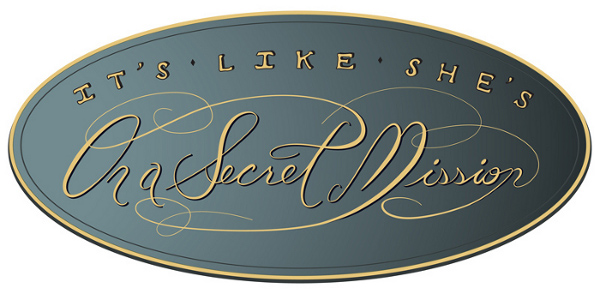Milton Glaser, Poster for Bob Dylan's Greatest Hits for Columbia Records, 1975. Courtesy of Milton Glaser, Inc.
Milton Glaser is, in so many ways, a New York designer. Born and raised in New York, Glaser graduated from the Cooper Union in 1951 before studying painting in Italy on a Fulbright Scholarship.[1] Once back in New York, Glaser became renowned for his diverse, eclectic and now-iconic body of work. He co-founded the revolutionary Pushpin Studios in 1954, which he helped direct for 20 years before establishing Milton Glaser, Inc. in 1974, and then teaming up Walter Bernard in 1983 to create the publication design firm WBMG.[2] And not only has Glaser's career included the founding of graphic design firms, but he is also co-founder, along with Clay Felker, of New York Magazine, where Glaser was president and design director from 1968 until 1977.[3] Additionally, Glaser has been an active member of the design and education communities throughout his career. He's served as instructor and a Board Member at the School of Visual Arts since 1961, is on the Board of Directors at the Cooper Union, and has been affiliated with The International Design Conference in Aspen since 1972 and the American Institute of Graphic Arts.[4] But in between a history of starting design firms, founding newspapers and teaching, there has always been the work. Glaser is primarily known for his logos and identity programs (a topic we'll focus on later in the month), but it's his posters that truly first drew me to him as a graphic designer.
Milton Glaser, Sony Tape Full Color Sound for Sony Records, 1979. Courtesy of Milton Glaser, Inc.
Glaser is responsible for the design and illustration of over 300 posters for clients in the areas of publishing, music, theater, film, institutional and civic enterprises, and commercial products and services.[5] While he's designed posters for nearly ever industry, music, in particular, has played a central role in his life, and it's a theme that can be seen throughout his poster design. The above Sony Records poster is not only for a record label, but its use of the score of Beethoven's 6th Symphony, which has been enhanced with watercolors to make it "the background to a pastoral intervention," is particularly well-executed and visually appealing in its design.[6]
Milton Glaser, New York Magazine, 1976. Courtesy of Milton Glaser, Inc.
Glaser believes that the role of the poster is to be effective in the purpose for which it has been designed, and that artistry plays a large role in this effectiveness. "Because of the poster's historical relationship to the world of painting, and by its physical size, the poster seems to offer more opportunities for the designer to do artistic or imaginative work than many of the other areas in which he may be working," Glaser said in an 1989 interview with Commercial Art Magazine.[7] But Glaser's poster designs, like all of his graphic work, have been as much about pushing the limits of his imagination as they've been about the sell. In particular, he's said that poster art is about breaking rules:
The earliest rule I remember about posters was that they were made for people on the run. Consequently, the ideal poster should be simple in form, reductive in content, and easily understood...In recent years, however, I've found myself modifying these beliefs in a variety of ways - partially from my desire to investigate alternative visual and philosophical possibilities, and also in an attempt to recognize the changes that have occurred in the last half-century regarding the public's ability to respond to ambiguity and complexity...At the moment such questions as 'what is real,' 'what is beautiful,' or 'what is socially responsible' can engage a designer's interest as much as the more traditional questions of effective communication.[8]
Milton Glaser, Only Words Until An Artist Uses Them for SVA, 1985. Courtesy of Milton Glaser, Inc.
One of Glaser's favorite ways to push boundaries has been to play shape and form, not only by breaking and changing the plane of the poster, but also through methods such as spacial and visual illusion. He explains that, "what convinces us that an object actually exists or did exist is one of the most complex questions in the visual arts. Although historically, painting has been the appropriate place to explore these ideas, they are equally interesting as subject for exploration in the graphic arts."[9] In the above SVA poster, Glaser asked the photographer to light the art so that the masking tape would be believably dimensional.[10] Indeed, it looks so convincingly like pieces of paper physically taped on to the poster that several times, while on display in the subway, Glaser was pleased to observe people actually attempting to lift the masking tape.[11] This particular piece not only shows a masterful use of illusion, but it's also an excellent example of the sense of playfulness and artistry inherent in Glaser's graphic design work.
[1] Milton Glaser, Inc., online, "Milton: History," http://www.miltonglaser.com/milton/c:history/#0, (accessed March 13, 2012).
[2] Milton Glaser, Inc., online, "Milton: Biography," http://www.miltonglaser.com/milton/c:biography/#2, (accessed March 13, 2012).
[3] Ibid.
[4] Ibid.
[5] Ibid.
[6] Milton Glaser, Inc., online, "Store: Posters," http://www.miltonglaser.com/store/c:posters/840/sony-tape-full-color-sound-1979, (accessed March 13, 2012).
[7] Milton Glaser, "The Role of the Poster: An interview with Commercial Art Magazine from 1989," from Art is Work, (Woodstock, NY: The Overlook Press, Peter Mayer Publishers, Inc., 2000), 13.
[8] Milton Glaser, "Breaking Rules," from Art is Work, (Woodstock, NY: The Overlook Press, Peter Mayer Publishers, Inc., 2000), 19.
[9] Milton Glaser, "Illusion and Reality," from Art is Work, (Woodstock, NY: The Overlook Press, Peter Mayer Publishers, Inc., 2000), 30.
[10] Milton Glaser, "Posters: Illusion," from Art is Work, (Woodstock, NY: The Overlook Press, Peter Mayer Publishers, Inc., 2000), 32.
[11] Ibid., 32.





These posters are incredible. I love the tones of the 2nd and fourth ones
ReplyDelete